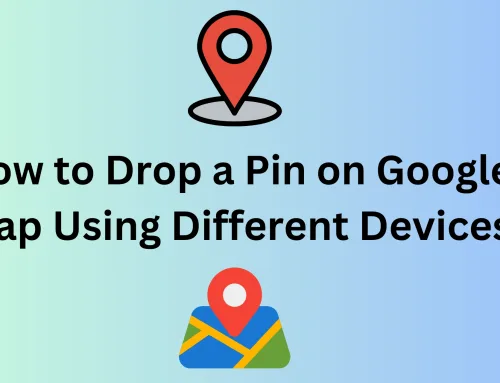A dog that is lost is virtually every dog’s most dreadful nightmare. With so many possible reasons that dogs can escape and disappear, it’s not surprising that around one-third of all dogs be missing at least once during their lives.
If your pet is missing right this moment, we’re sorry that you’re in this situation. It’s natural that you’re anxious and scared, or anxious. Stop, take several deep breaths, and try to remain at peace.
A positive attitude is one of the most effective tools in the search for your pet. Below, you’ll learn the best way to locate a missing dog. First, let us share some positive lost dog information to help you feel more secure:
How do I increase the odds of locating an animal that has gone missing?
- 93 percent of dogs lost (in an examination conducted by the ASPCA) were returned
- 90 percent is the probability of locating an animal that has gone missing in the first 12 hours
- 49 percent of dog owners found their pet’s friend while looking around in the neighborhood
- 16 percent of dogs who have been lost do return home
- 15 dog owners discovered their dog’s identity thanks to the use of a chip or ID tag
- 6percent of dog owners have had their dogs found at shelters for animals
- A dog who is lost may endure months or years without a companion.
- The pet tracker with GPS is the most effective method to keep track of or locate lost dogs
If you’ve got lost your dog, start your search now to increase your odds of getting them. Your dog could return independently and use scent to guide them. Even the dogs that are most domesticated can traverse long distances and even survive by searching for water and food until they get home.
Do not be afraid you have a good chance of getting your dog back once more. An electronic dog tracking system attached to the collar of your dog can significantly enhance your chances the next time. you can also go through some free lost dog flyer templates and make them fast enough to find your lovely missing dog.
How do you locate an animal that is lost?
1. Make sure you are at home
If your dog is not there First, check your home and its immediate area. Do you think your dog is afraid? They may be hidden in the vicinity. Maybe they’ve gotten stuck in someplace? Look inside the:
- closets
- shed/garage
- pool
- automobiles
- basement/attic
- garden
or wherever and wherever else your four-legged friend could and wherever else your four-legged friend might. You can ask family members or friends to assist you with your in your search. Bring your dog’s favorite treats or a toy in order to draw them to come out of the shadows. Set your dirty clothing or the bedding of your dog outside to lure your dog with familiar scents.
2. Contact us to verify your dog’s microchip details.
If the dog you lost is microchipped, contact the microchip company to ensure that your contact information is current to up-to-date. If someone comes across your pet and brings them to a vet or shelter, your microchip’s ID will be read and the vet can find you on the microchip databases. If your contact information is accurate and everything goes according to plan you could get an email in case the dog you lost is found.
Let the microchip manufacturer know that your dog has gone missing and they will inform local shelters for animals. If you have the microchip ID but aren’t aware of the company you can use the universal microchip lookup for your pet. You can also enter your details with microchip databases, such as:
- Free Pet Chip Registry (911PetChip)
- Pet Link
- Found Animals Registry
How do you locate the dog that has been lost with a microchip?
Keep in mind that only 15 percent of lost dog owners were able to locate their dog with an ID tag or microchip. It is not enough to rely on a microchip to track your pet. Microchips aren’t equipped with GPS or other technology that could assist you in tracking or locating your dog in real-time. The sole function of a microchip is to track the dog’s location in the event that they get lost and then found.
3. Choose your search radius
Then, prior to expanding your search to find your dog that has gone missing, ask yourself these questions:
- Did your dog wander off from your home or in an area that you are not familiar with?
- Do you have a dog that was scared by something, or is he looking for adventure?
- Are there any places or people near you that where your dog has been to?
- Are there any dangers in the vicinity of places in which your pet may be entangled or get into trouble?
- What is the maximum distance you believe your dog has been in the time that they have been lost?
- Are your dogs active and healthy (capable of running farther) or is it more uninterested and lazy?
- How long is your dog running?
The answers to these questions will aid you to limit your search radius and also search more effectively.
4. Find the location in which the dog went missing
If your dog hasn’t returned to you in a while is time to act to return them to their home. The search for the immediate area and the greater distance of the location where your dog wandered off increases the chances of getting them back. Here are some suggestions to aid you in your hunt:
- Name your dog Make sure you call your dog’s name in a calm and clear manner You don’t want to scare your dog more by using a loud sound of your voice.
- Help others with your search: Ask family, friends neighbors, neighbors, or anyone else near to assist you with your search. If someone comes across the dog, you can request that they call you and inform you prior to they go to the dog. A stranger coming in contact with a lost pet might make them more scared.
- Take clear pictures of your pet: Show your dog’s image to friends and people you meet; give them a copy of the image with your contact number on the back.
- Be sure that one of your family members is home When everyone is out looking for something, make sure you have at minimum one of your family members is home to greet your dog in the event that he or they returns alone.
- Make sure your front door is open If your dog wandered off at home or staying at a friend’s house or at a holiday residence, make sure to close the door and gate unlocked, to allow them to return to their home in a clean and unobstructed manner.
- Bring your dog’s most loved toy or treat Dogs are able to follow scents across miles, so make sure to put their favorite blanket, bed, or chew toy in front of the door of your home. Bring treats and toys to take along when you go on your hunt.
- Follow your tracks Revisit the areas that you’ve walked in recently or often with your dog. You might find that they’ve revisited these places to search for you.
- Ask locals if they have had a glimpse of your animal If you’re exploring the area in which your dog went missing and you are in the area, ask anyone who you meet whether they’ve seen the dog recently. Also, leave your phone number to them in the event that they happen to find or even see the dog.
- Find more: In case you aren’t able to locate your dog, extend your search to include a larger area. You can drive through the neighborhood to extend your search to more areas if needed.
5. If your dog is missing, report it and call local shelters
Contact the local animal shelter, rescue centers as well as animal control officers, dog wardens as well as any other similar organizations within your region to report missing dogs and find out if anyone has already taken your dog to any of these places.
Utilize Petco’s Lost Love within the US or the National Pet Register in the UK to make a report of your dog missing on the database of the nation. You can also look through dog posts found on the internet to determine if someone has seen your pet.
6. Make use of Facebook as well as other social media sites
Post a message via your social media platforms that your dog has gone missing. Include the following details in your message:
- numerous photos of your pet
- the date and location where the last time your dog was seen
- Information about your dog’s personality (i.e. whether they are friendly or scared)
- your contact details including your the phone number
Make sure you share the message in any relevant Facebook groups to help find or lose pets/dogs in your neighborhood.
6. Create and distribute posters for lost dogs
Print and create paper lost dog flyers with your pet’s information. You can then post them around your neighborhood or the area in which your dog went missing. Utilize large, bright neon-colored paper, if you can, so that your flyer will be more prominent. A good lost pet sign includes:
- A description of the dog. This includes any unique or identifiable particulars
- A picture of the dog
- Collar tag’s details
- The last known location
- Microchip ID number
- Your contact details
- Reward details
Tip To assist us, we’ve designed a Free Lost Dog Poster Template that you can download and immediately use! Download it here: Free Lost Dog Poster Template
Post posters about the lost dog on telephone poles around the area. Make an impressive sign to put outside your yard, or on your door.
The flyer for lost dogs can be hung on bulletin boards at local cafes and shops and vet practices pet shops as well as animal shelters and hospitals.
If you’d like to go more, try car tagging to inform people of the loss of your pet.
Tips: PawBoost is a service that lets you report your dog’s missing and post it to local lost and found Facebook pages, inform local community members of your dog’s location, print a lost pet flyer, and many more.
Do “lost dog” posters really assist people in finding their pets?
Yes! There are numerous stories that you can find online about how posters of lost dogs actually helped dog parents reconnect with their furry companions. Even in the age of social media, posters are made of paperwork. Therefore, use both physical and digital lost log posters for the best outcomes.
7. Look into other ways to locate the dog you’ve lost
If you’re still not finding your dog that’s missing It’s time to think of something new. These suggestions can help you find your furry companion home:
- You can pay to publish the missing dog’s notice in the local paper or on the radio.
- Employ a pet detective for your pet or missing pet response expert.
- Give a reward and don’t cut corners.
- Visit or call animal shelters every all day.
- Utilize other websites for lost dogs and apps, including Dog Finder and Animal Amber Alert.
- Get a sniffer dog to assist you in finding your dog that has gone missing.
- Contact Animal Control to find out the presence of your dog.
- Display posters for lost dogs at the vet’s office in the event that your dog was injured and was brought in by a kind humane samaritan.
8. Don’t give up!
It’s difficult to feel discouraged if your dog is absent for a long period of time. However, many dog owners like you have been in your position and eventually were found their dogs once more. Whatever the time frame, several days, hours, or even months, don’t lose your hope that you may find your dog one day.
Watch the video below to learn an inspiring story of lost dogs that were reunited with their owners.
Bonus:
How do you find an animal that has gone missing in the dark
Do you need to locate a lost dog in the dark? Here are some ideas to assist:
- You can determine your search radius by taking into account things like your dog’s level of fitness or temperament, personality, preferred places, and people, or the reason that led the dog to flee. Take a map, and mark your search area to aid in your search.
- Check that you’ve done the steps mentioned above including making flyers, notifying nearby shelters and vets, and posting your information on the websites for lost pets and on social networks, and making sure you report your pet’s loss.
- Find a few relatives and friends (people who are familiar with their dog) to aid you on your hunt. Divide them up in order to each explore a different region.
- Take a headlamp or flashlight to aid you in the darkness.
- You can call your dog by their name.
- Place your pet’s most loved items like food, water, or toys at the location in which your dog wandered off. Be sure to keep an eye on the area, in case your dog comes back.
- Do not chase your dog around – it will only cause them to become more anxious or stressed. Bring them and go back with you.




